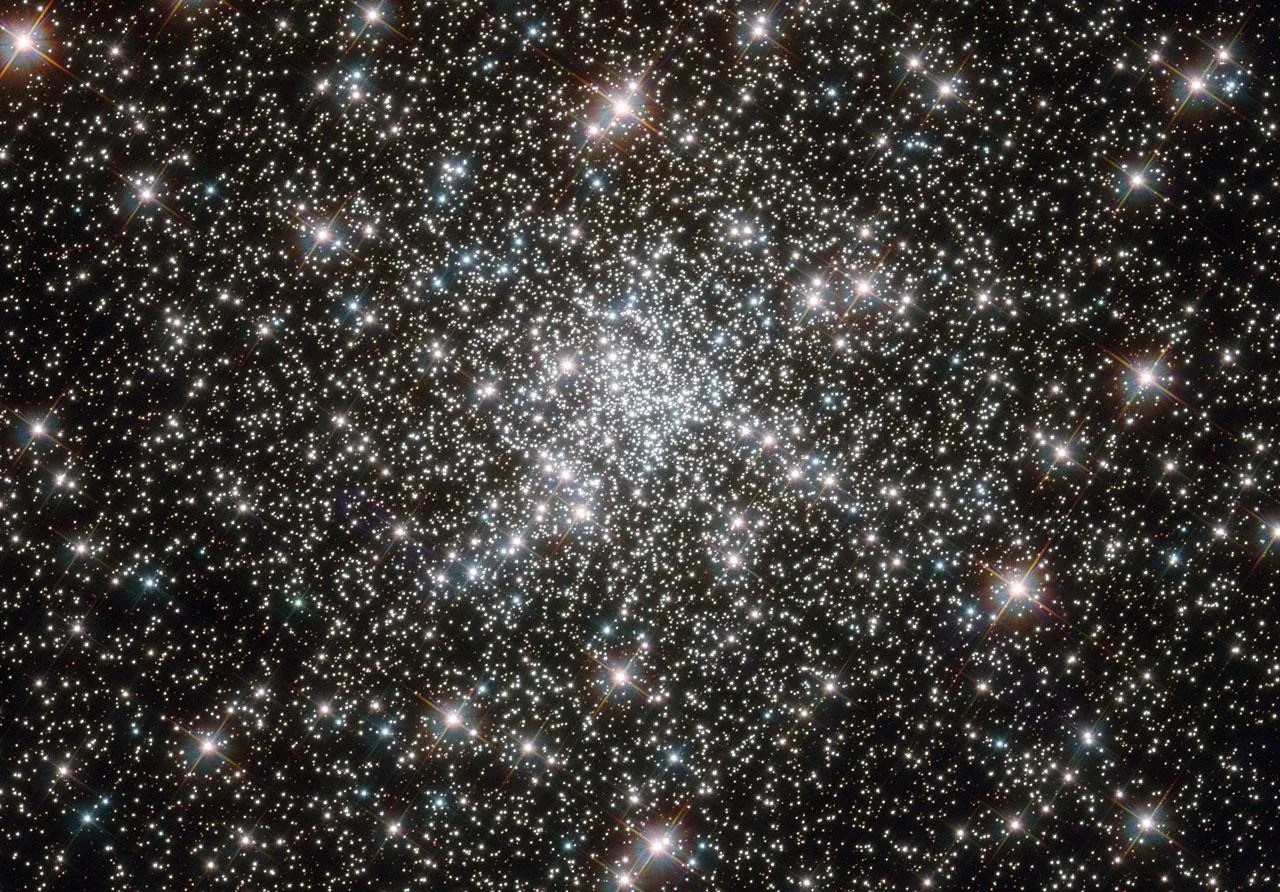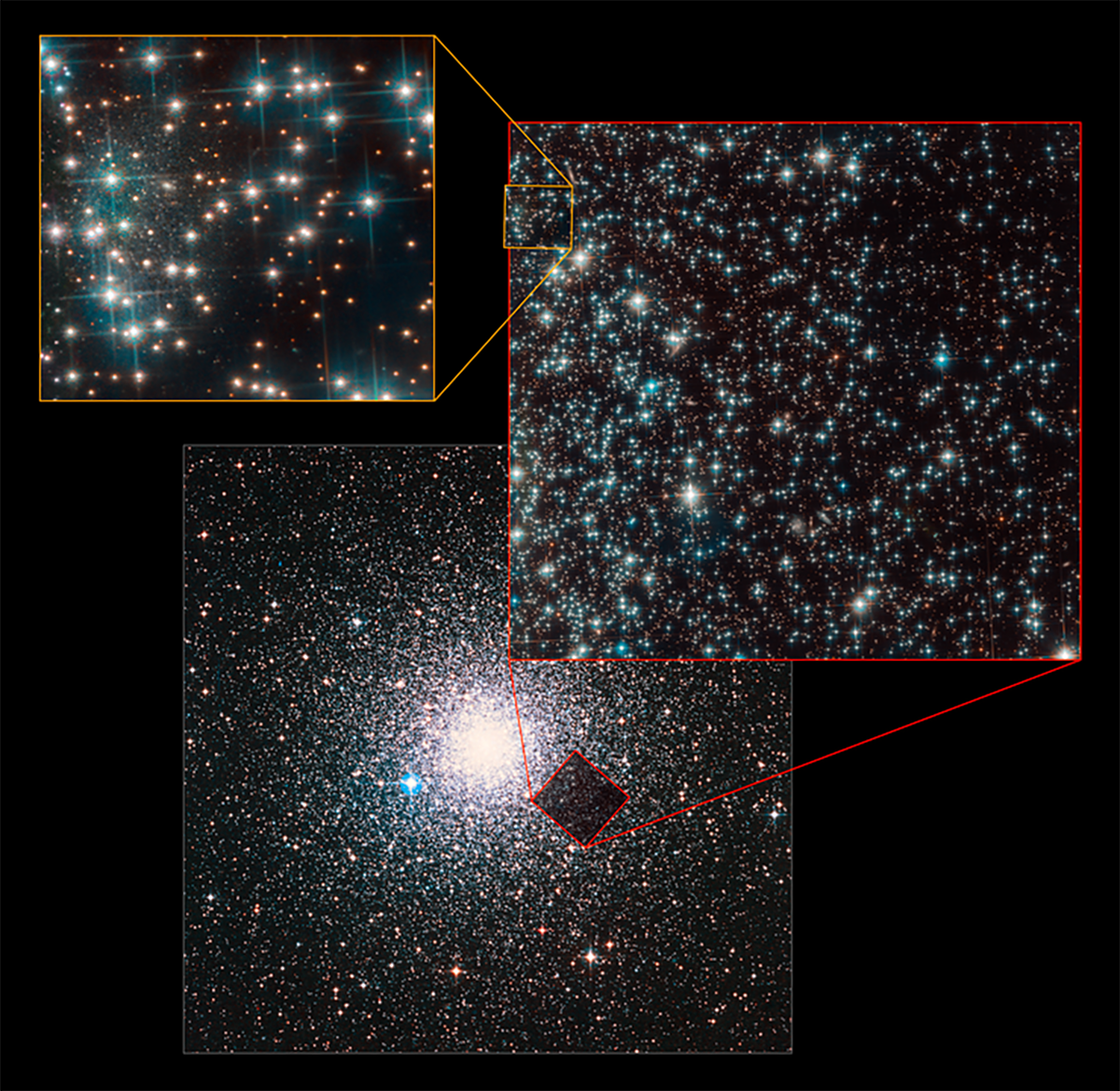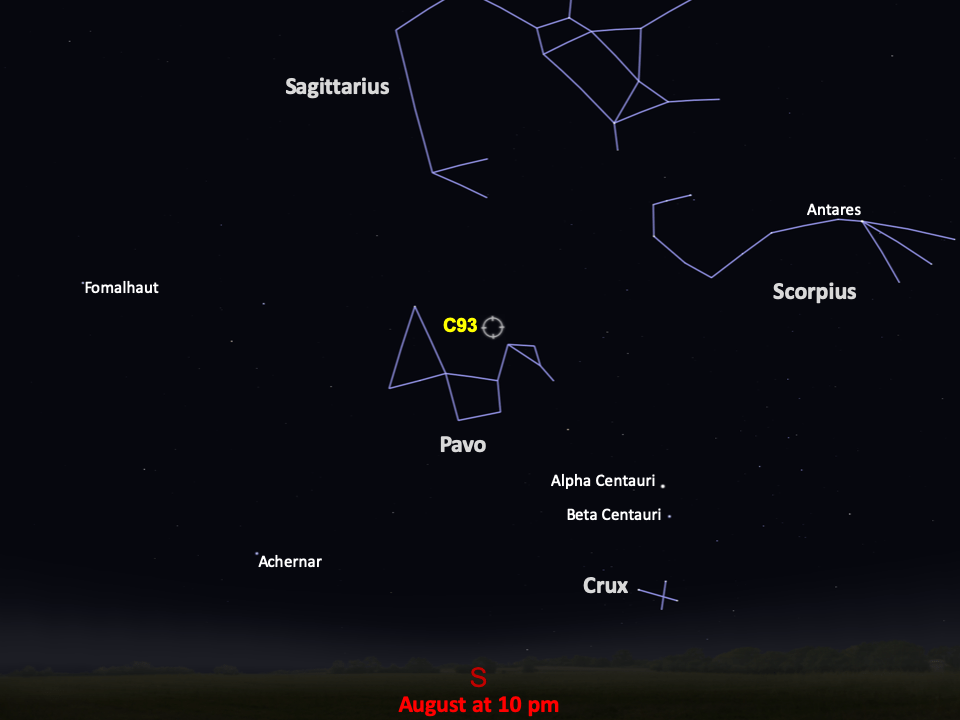Caldwell 93
Hubble’s observations of Caldwell 93 also uncovered an unexpected galaxy.
Distance
13,000 light-years
Apparent Magnitude
5.4
constellation
Pavo
object type
Globular Cluster

Caldwell 93 is a glimmering globular cluster of over 100,000 stars, all united by gravity. The cluster holds its stellar population within a sphere that is about 100 light-years in diameter. Also cataloged as NGC 6752, this island star city resides in the halo of our Milky Way galaxy. Globular clusters are the first homesteaders of the Milky Way, some possibly as old as the galaxy itself. The stars in this ancient swarm are all thought to be close to the same age — about 10 billion years old.

This Hubble image, taken in visible and infrared light using the Advanced Camera for Surveys, revealed that a remarkable fraction of the stars near the cluster’s core are multiple star systems. Hubble also discovered the presence of blue straggler stars, which appear to be surprisingly younger than their neighbors. The blue stragglers are thought to be formed by star mergers and collisions in the dense stellar environment at the cluster’s core.
Hubble’s observations of Caldwell 93 also uncovered something unexpected — a galaxy! Dubbed Bedin 1, this galaxy is over 2,000 times farther from Earth than Caldwell 93, but it was serendipitously discovered peeking out between the cluster's stars. It measures about 3,000 light-years across, which is only 1/30th the size of the Milky Way. In addition to being tiny it is also incredibly faint, leading astronomers to classify it as a dwarf galaxy. It is 13 billion years old — nearly as old as the universe. Because of its old age and isolation, which resulted in hardly any interaction with other galaxies, the dwarf is the astronomical equivalent of a living fossil from the early universe.
Caldwell 93 was discovered by astronomer James Dunlop in 1826. The cluster is about 13,000 light-years away and is found in the southern constellation Pavo. With a magnitude of 5.4, Caldwell 93 is one of the brightest globular cluster in the night sky, potentially visible to the naked eye under very dark skies. Binoculars will provide a remarkable view of this stellar collection, which is best observed during winter in the Southern Hemisphere. It can also be spotted from the Northern Hemisphere in the summer from sites close to the equator.
For more information about Hubble’s observations of Caldwell 93, see:
Young Stars at Home in an Ancient Cluster
Hubble Accidentally Discovers a New Galaxy in Cosmic Neighborhood

Glossary
Blue Straggler - A blue star in a star cluster that appears to be far younger than its neighbors, likely resulting from collisions between stars or by other stellar interactions.
Dwarf Galaxy - A small, faint galaxy with only millions to a few billion stars.
Globular Cluster - A spherical group of stars that are gravitationally bound to each other, with most of the stars concentrated at the cluster’s center.
Magnitude - The brightness of an astronomical object, represented by a number; bright objects have low numbers on the magnitude scale, while dim objects have high numbers.
Explore Hubble's Caldwell Catalog
The following pages contain some of Hubble’s best images of Caldwell objects.

Caldwell 1
Also known as NGC 188, this group of stars formed from a large cloud of gas making the stars roughly…

Caldwell 2
This shell of gas is expanding outward, away from the dying star within.

Caldwell 3
This barred spiral galaxy was first spotted by British astronomer William Herschel in April 1793 in the constellation Draco.




